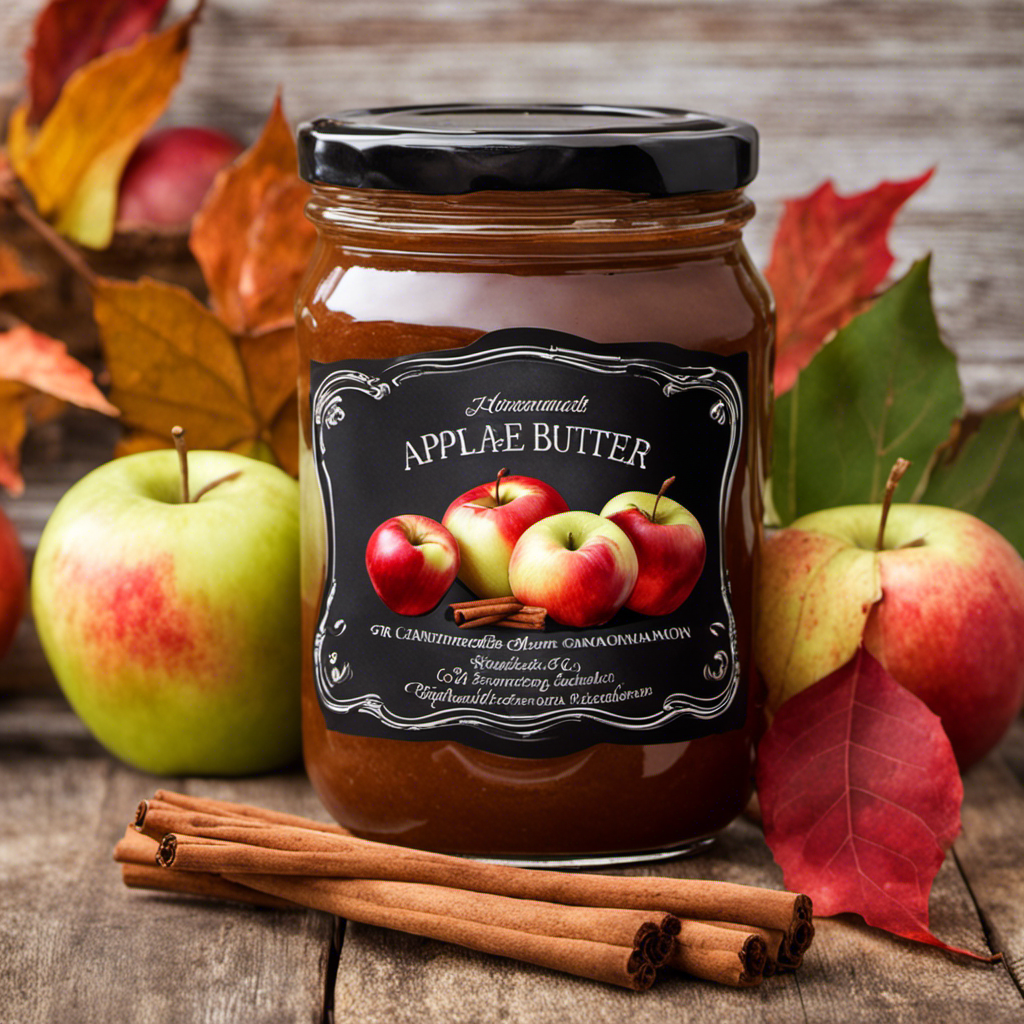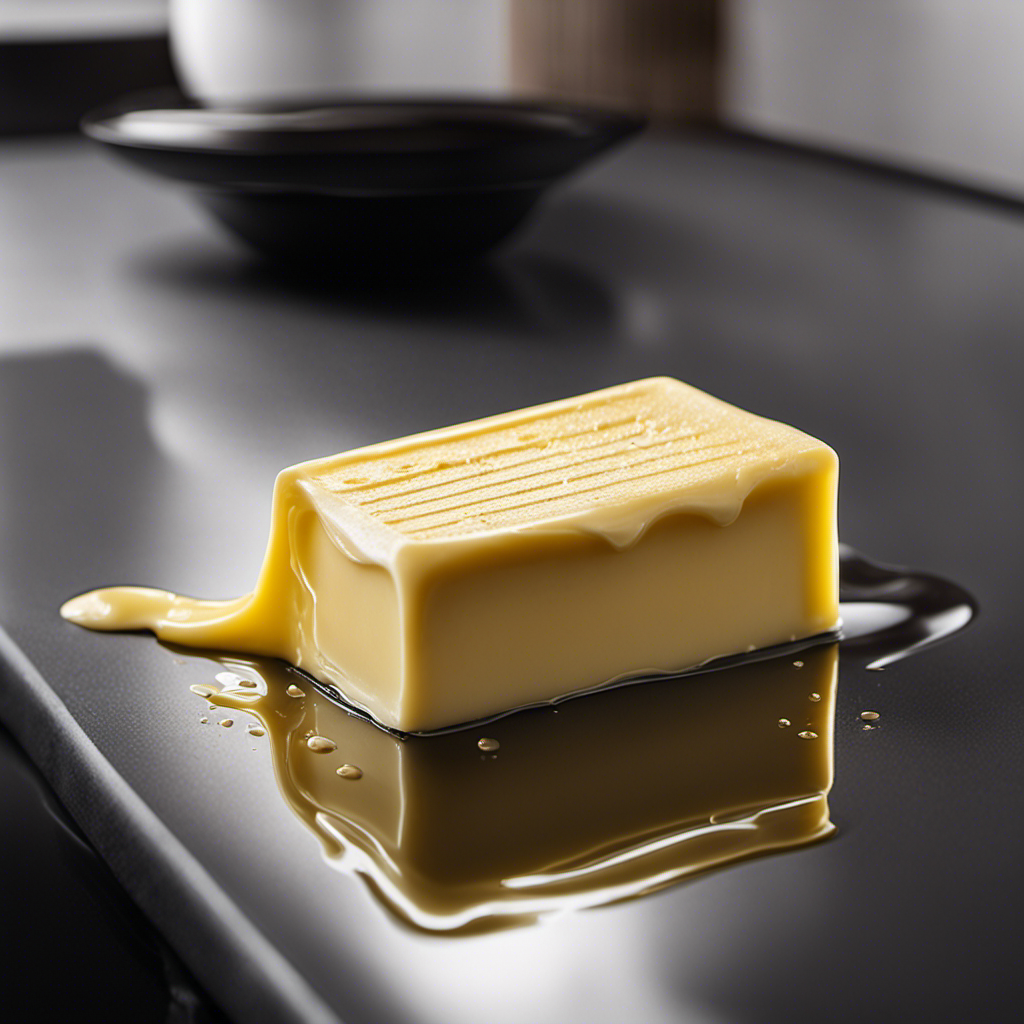At higher altitudes, lower air pressure reduces oxygen levels, which can slow butter’s spoilage process, but temperature fluctuations become more extreme, causing the butter to soften or harden quickly. Humidity levels also change, risking mold growth or moisture absorption. Proper storage, like airtight packaging or cooler environments, helps extend freshness. For specific tips tailored to your altitude, explore ways to keep your butter fresh longer and maintain quality.
Key Takeaways
- Higher altitudes reduce oxygen levels, slowing butter oxidation and delaying spoilage.
- Temperature fluctuations at high altitudes can soften or harden butter, affecting shelf life.
- Increased humidity promotes mold growth, reducing butter’s freshness in certain altitude zones.
- Insulating and proper sealing help maintain butter quality in variable high-altitude climates.
- Cooler, dark storage environments at higher elevations extend butter’s freshness and shelf life.
How Changes in Air Pressure Affect Butter Preservation
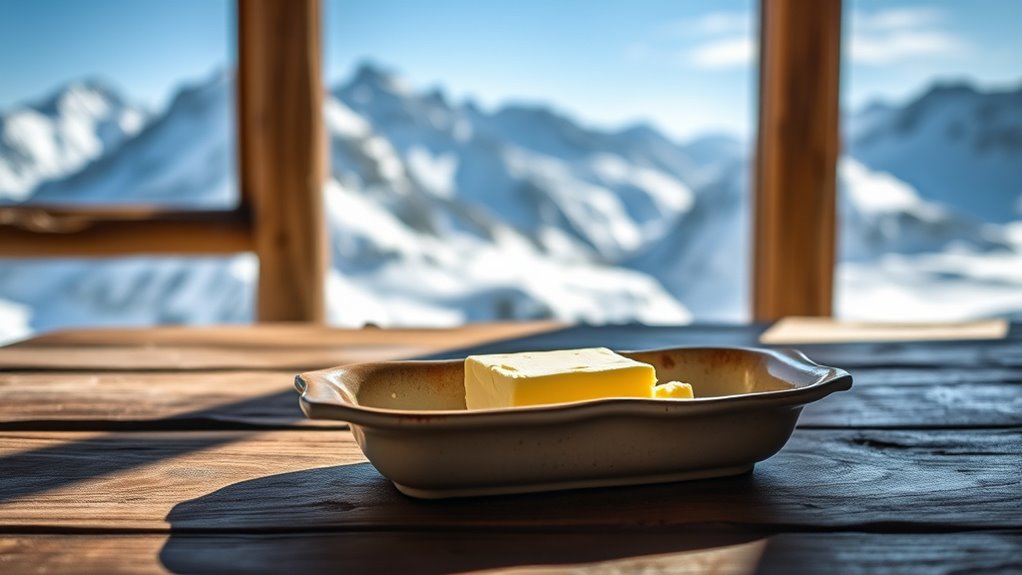
As you ascend to higher altitudes, the air pressure decreases, which directly impacts how butter ages and stays fresh. Lower air pressure means there’s less oxygen in the environment, which can slow down butter oxidation—the process that causes butter to spoil and develop off-flavors. With reduced oxygen exposure, butter is less likely to oxidize quickly, potentially extending its freshness. Additionally, maximize space and organization can help in storing butter properly at higher elevations, ensuring consistent conditions. However, decreased pressure can also alter how moisture interacts with the butter, possibly leading to subtle changes in texture. You might notice that butter at higher elevations remains fresher longer due to slower oxidation, but it’s essential to contemplate other factors like temperature. Overall, changes in air pressure at altitude profoundly influence butter preservation by affecting oxidation rates and moisture interaction.
Temperature Fluctuations at Different Elevations and Their Impact
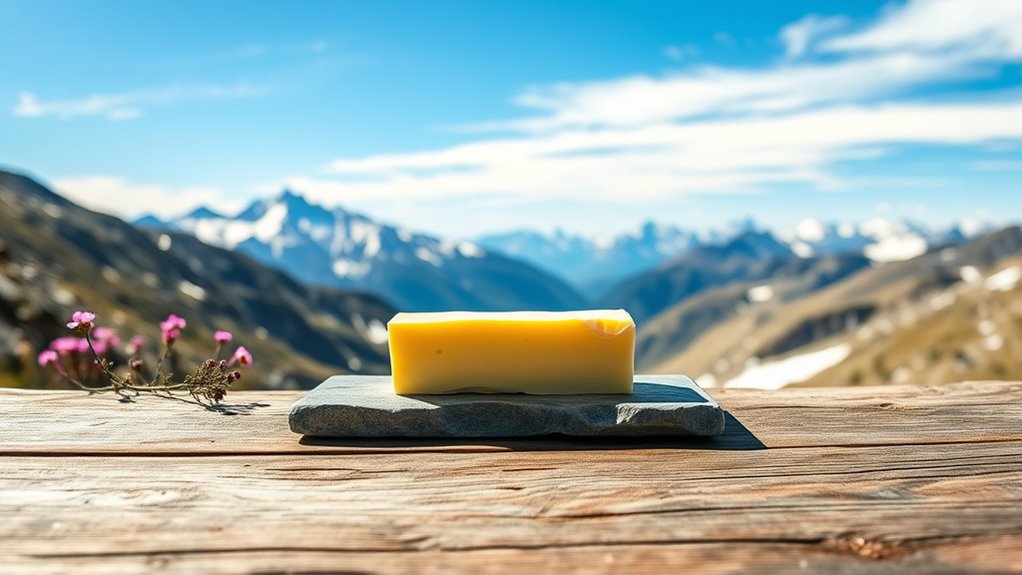
While lower air pressure at higher elevations can slow butter oxidation, temperature fluctuations often pose a different challenge. Altitude effects cause temperatures to vary more dramatically throughout the day, which can impact butter’s texture and freshness. Sudden warms can soften butter faster, increasing the risk of spoilage, while cold snaps harden it, making spreading difficult. These temperature swings make it harder to maintain a consistent storage environment, especially if your storage isn’t temperature-controlled. As a result, butter exposed to frequent fluctuations may develop uneven texture or spoil more quickly, reducing its shelf life. To mitigate this, you should store butter in insulated containers or cool, stable environments to minimize the impact of altitude effects on temperature variability.
Humidity Levels and Their Role in Butter Spoilage
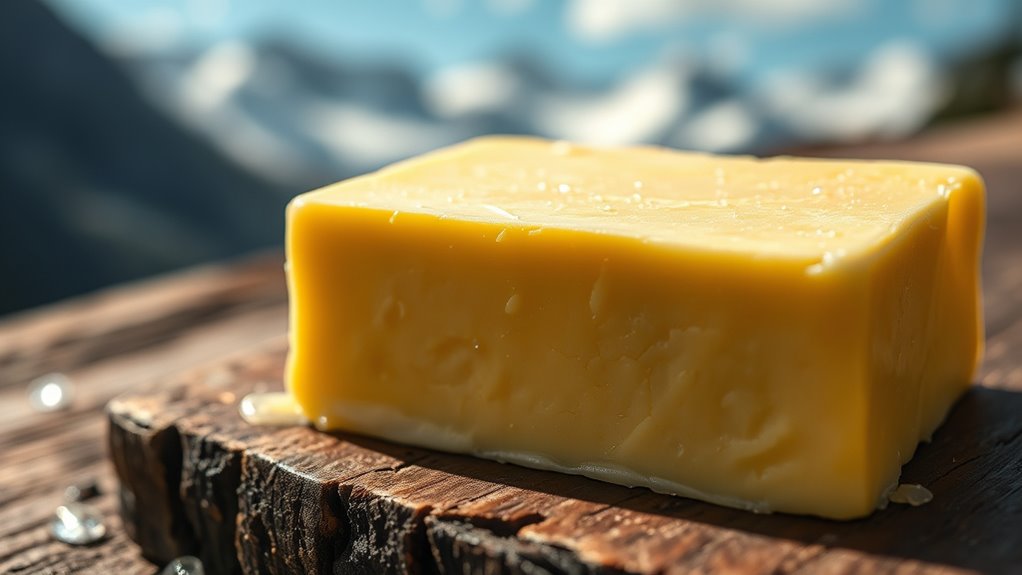
High humidity levels can accelerate butter spoilage by promoting mold growth and causing the butter to absorb excess moisture. When humidity control isn’t maintained, mold can develop quickly, compromising quality and safety. To understand this better, consider these points:
- Excess moisture creates a breeding ground for mold, leading to faster spoilage.
- High humidity can cause butter to become sticky and change texture.
- Open containers or poor packaging allow humidity to seep in, increasing mold risk.
- Maintaining low humidity levels helps inhibit mold growth and prolongs shelf life.
- Proper storage techniques are vital to prevent moisture buildup and preserve butter quality.
Controlling humidity is essential, especially in humid environments or at certain altitudes, where moisture levels naturally fluctuate. Proper humidity control ensures your butter stays fresh longer and remains safe to consume.
Storage Recommendations for Different Altitude Zones
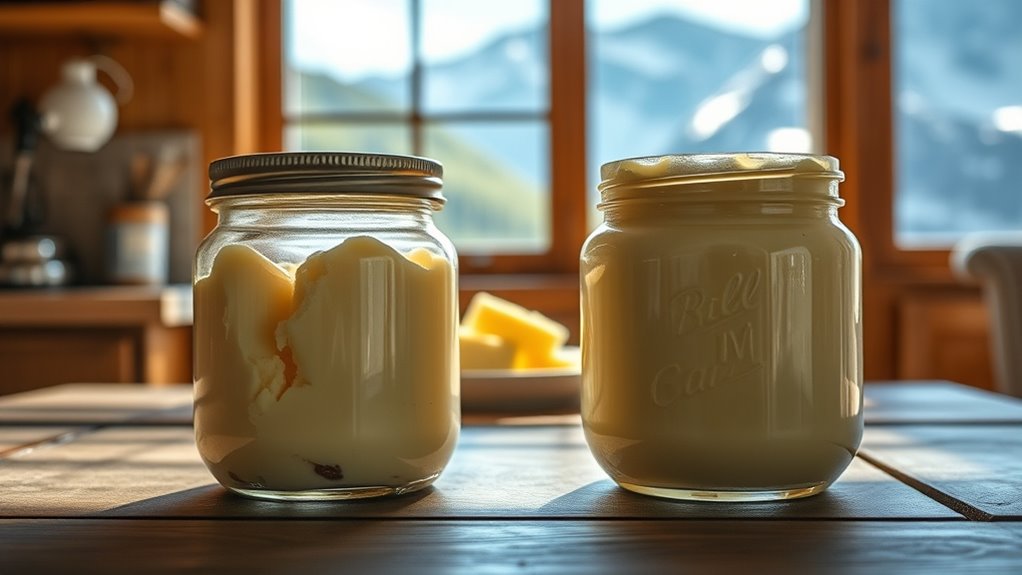
Altitude substantially influences how you should store butter to maximize its freshness and safety. Different altitude zones require tailored storage methods to slow spoilage. In low-altitude areas, butter benefits from airtight butter packaging kept in a cool, dark place or the refrigerator to prevent oxidation and microbial growth. At moderate altitudes, you’ll want to ensure butter packaging remains airtight and consider slightly lower storage temperatures to compensate for increased temperature fluctuations. For high-altitude zones, storing butter in an insulated container or cooler environment helps maintain consistency, as temperature swings are more common. Always choose butter packaging that provides a good seal to prevent exposure to air and moisture. Proper storage aligned with your altitude zone helps preserve butter’s quality and extends its shelf life effectively.
Practical Tips for Extending Butter’s Freshness at High Altitudes

To keep butter fresh at high elevations, you need to adopt specific storage practices that address the challenges posed by temperature fluctuations and drier air. Using altitude specific packaging helps protect butter from rapid spoilage. Additionally, local storage methods can enhance freshness by leveraging traditional techniques. Here are some practical tips:
- Wrap butter tightly in foil or parchment, then place it in an airtight container.
- Use a butter bell or crock designed for cooler storage at room temperature.
- Store butter in a cool, dark place away from direct sunlight.
- Consider refrigeration with altitude-specific packaging to slow spoilage further.
- Ensuring proper temperature regulation is crucial, as thermal stability helps preserve butter’s quality longer despite high-altitude conditions.
These practices help maintain freshness longer while adapting to high-altitude conditions, ensuring your butter stays fresh and flavorful.
Frequently Asked Questions
Does Altitude Affect the Nutritional Value of Stored Butter?
Altitude can influence the nutritional stability of stored butter, but it doesn’t substantially affect its antioxidant preservation. You might notice that at higher altitudes, cooler temperatures help keep butter fresh longer, maintaining its nutrients. However, exposure to light and air can still degrade some nutrients over time. To preserve butter’s nutritional value, store it in a cool, dark place, especially if you’re at higher elevations.
How Do Altitude Changes Influence Butter’s Flavor Over Time?
You might notice that altitude flavor changes as butter ages, especially at higher elevations. Lower oxygen levels and cooler temperatures slow down butter aging, preserving its fresh taste longer, while higher altitudes can intensify certain flavors or cause quicker flavor shifts. These altitude changes influence how butter’s flavor develops over time, making it taste different depending on where you store it. So, altitude truly impacts your butter’s flavor evolution.
Are Certain Butter Types Better Suited for High-Altitude Storage?
Imagine your butter tucked away in a cozy high-altitude kitchen, where thin air and fluctuating temperatures challenge its freshness. You’ll find that cultured or salted butters, with their natural preservatives, hold up better under high-altitude refrigeration. For ideal storage, choose butter with efficient packaging that seals moisture and prevents oxidation. These types are better suited for high-altitude environments, helping you extend shelf life and preserve flavor longer.
Can Altitude Impact Butter’s Melting Point and Texture?
Altitude can definitely impact butter’s melting point variability and cause texture alterations. At higher elevations, lower atmospheric pressure makes butter melt more quickly and unevenly, leading to a softer or more spreadable texture. You might notice that butter behaves differently in recipes or at room temperature because of these changes. So, when cooking or storing butter at high altitude, expect some differences in how it melts and feels.
What Are the Signs of Butter Spoilage Specific to High Elevations?
At high elevations, you might notice butter developing airy spoilage, where bubbles or a light, foamy texture form, indicating fermentation or spoilage. Mold development can also occur more quickly due to the cooler, moist environment. If your butter smells sour or has visible mold, it’s best to discard it. Pay close attention to changes in texture, smell, and appearance, as these are key signs of spoilage specific to high-altitude conditions.
Conclusion
Just like a delicate flower needs the right conditions to thrive, your butter needs proper storage at high altitudes. I once forgot to adjust my storage, and my butter spoiled faster than expected—like a clock running out of time. By understanding how altitude affects air pressure, temperature, and humidity, you can keep your butter fresh longer. Think of it as giving your butter the perfect climate to stay delicious, no matter how high you go.




